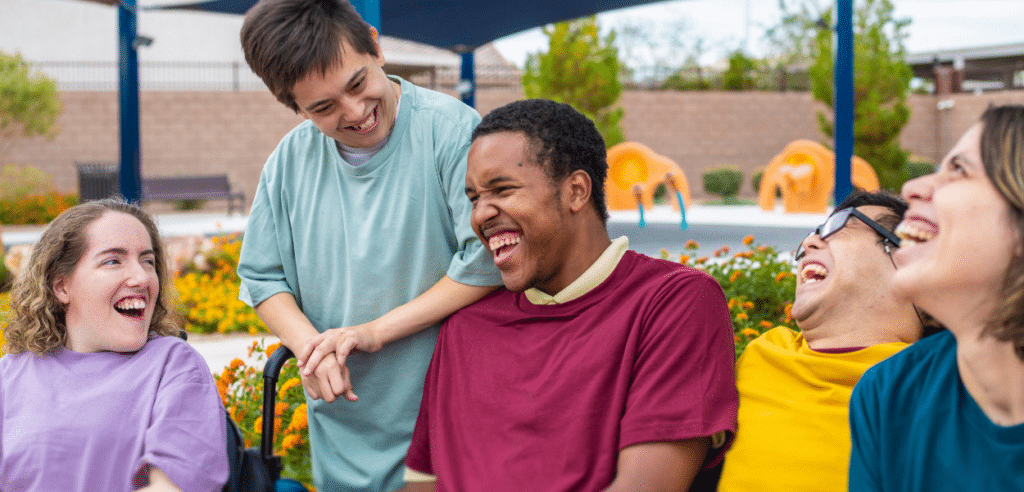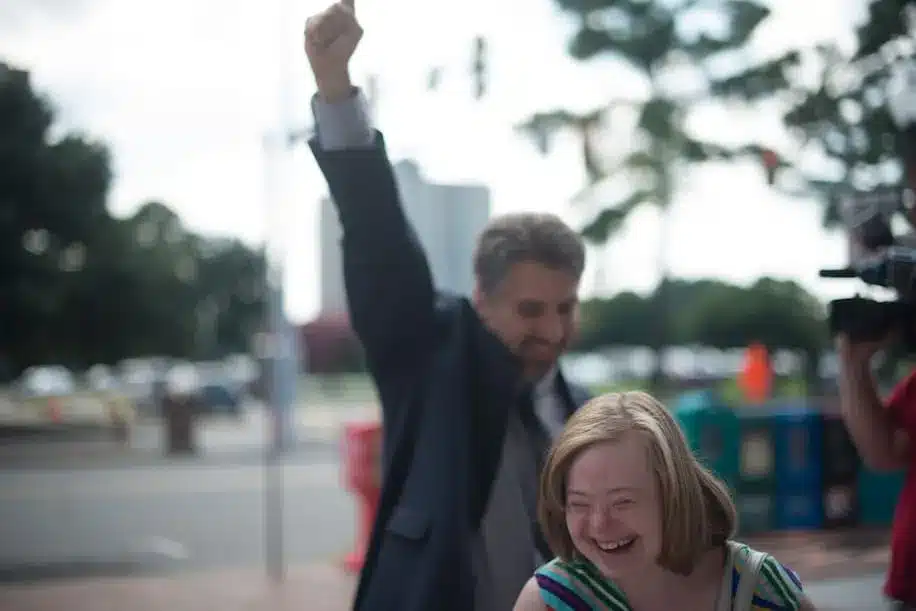Have you noticed a shift towards encouraging individuals with disabilities to make better decisions independently? This approach, known as supported decision-making, is gaining attention and transforming support systems for those with disabilities.
In this blog post, I take a closer look at what this initiative involves, and how it represents a significant change from traditional methods, particularly in the context of people with developmental disabilities.
From Conservatorships to Supported Decision Making: A Path to Greater Autonomy
Historically, when children with developmental disabilities reached adulthood, a common route was to establish a limited conservatorship.
This legal process involves a parent or guardian approaching a court to assert that their child, despite being a legal adult, lacks the capacity to make their own decisions. As a result, the court often grants the parent the continued authority to make decisions on behalf of their now-adult child.
This approach, while protective in nature, can sometimes overlook the individual’s potential to participate in their own decision-making process. The concept of limited conservatorship, which I have explored in a separate video titled ‘How do I set up a Limited Conservatorship?’, might not suit everyone’s needs.
For instance, some individuals with developmental disabilities, while needing additional support, may still possess the capacity to make informed decisions. Others, especially those with mental health challenges not under the purview of regional centers, might not be eligible for this kind of conservatorship.
In cases where limited conservatorship is not suitable, available, or desired, an alternative approach has been gaining momentum: supported decision making.
This concept is all about reshaping how we view decision-making capabilities in individuals with disabilities. Supported decision making offers a more inclusive, respectful way of assisting those who, with the right support, can make their own decisions.

Understanding Supported Decision Making
But what is supported decision making, exactly? Well, in essence, it involves creating an environment where those with disabilities receive the necessary assistance to understand and make decisions.
This could mean simplifying complex information, providing guidance, or just being there to discuss options. Unlike limited conservatorship, which can sometimes unintentionally stigmatize individuals by implying they are incapable of making decisions, supported decision making fosters a sense of independence and respect.
A crucial aspect of this approach is the supported decision making agreement. This is an arrangement where the individual with a disability agrees to receive assistance from a trusted person or people in their decision-making process.
It’s not about taking over their decisions, but more about empowering the disabled person to be the decision-maker, with guidance and support tailored to their needs.
Supported Decision Making and Conservatorship
Interestingly, supported decision making can sometimes intersect with guardianship issues. While guardianship often involves a guardian making decisions on behalf of someone, supported decision making under the framework of guardianship can offer a balanced approach.
Here, the guardian supports the individual in making their decisions, ensuring their voice is heard and respected.
The Story of Jenny Hatch: A Case for Change in Conservatorship Practices

In our exploration of supported decision making, it’s essential to recognize the challenges and abuses that have occurred within the traditional conservatorship system. A touching example of this is the story of Jenny Hatch, a developmentally disabled woman with Down syndrome living in Virginia.
Jenny was leading a life that was fulfilling for her, working part-time at a thrift store and enjoying the company of friends. However, an accident abruptly disrupted her life. Her mother and stepfather took legal steps to conserve her, which led to her placement in a group home, far from her preferred living environment. This change was deeply distressing to Jenny, who firmly believed in her ability to make her own decisions.
Determined to regain her autonomy, Jenny fought against the conservatorship. Her efforts paid off, and she was successful in reversing the decision. Jenny’s case highlights a critical issue: the need to rethink the way we approach the autonomy of people with disabilities. There’s a growing consensus that we should not be quick to strip away people’s rights to make their own decisions but rather support them in exercising these rights.
Supported Decision Making: Empowering the ‘Deciders’
Jenny Hatch’s story was a driving force behind the movement towards supported decision making. In this model, individuals with disabilities, referred to as ‘deciders,’ take the lead in their decision-making process. They are surrounded by a supportive team, each member known as a ‘supporter,’ who assists them in making decisions.
This approach is not exclusive to people with disabilities; it reflects a universal method of decision-making where we seek advice from those around us. For instance, while I sought legal career advice from my father, a lawyer, I turned to a different friend for relationship advice. Similarly, in supported decision making, deciders consult with their supporters, who bring diverse perspectives and expertise to the table.
Respecting and Supporting Autonomy
In supported decision making, great emphasis is placed on respecting and supporting the disabled person’s ability to express their preferences and choices, regardless of their communication method. Whether verbal or non-verbal, all forms of communication are valued and encouraged to understand the individual’s preferences accurately.
Research shows that empowering individuals with disabilities to make their own decisions leads to overwhelmingly positive outcomes.They tend to make better choices, develop higher self-esteem, and experience less exploitation. Moreover, they often experience improved physical and mental health, which is a universal goal for all individuals, especially our children.
The History and Evolution of Supported Decision Making
This initiative didn’t emerge out of the blue; it has roots that span continents and decades.
The concept of supported decision making first legally took shape in Sweden during the 1980s and 90s. Recognizing the need for a more inclusive approach to decision-making for disabled people, Sweden pioneered this program, setting a precedent for other countries. Following suit, British Columbia in Canada also adopted measures to empower disabled individuals in their decision-making processes.
The UN Convention and Global Ratification
A significant milestone in the journey of supported decision making was the United Nations’ adoption of the Convention on the Rights of Persons with Disabilities in 2006. This convention, ratified by 185 countries (though not by the United States), marked a global acknowledgment of the importance of upholding the rights of disabled persons, including their right to make their own decisions.

Supported Decision Making in the United States
In the United States, the movement towards supported decision making has been gaining traction. To date, about 20 states have either passed laws or acknowledged supported decision making in some form, with Texas being the pioneer. California is one of the most recent states to join this movement.
Want to know more about Supported Decision-Making in your state? Take a look at the interactive map created by the National Resource Center for Supported Decision-Making and select the state to view.
In 2022, California passed AB 1663, a bill that sets policies for enacting supported decision making. This legislation addresses key concerns such as ensuring supporters are not financial predators and integrating supported decision making within the court system. While I won’t go into the specifics here, the bill is a significant step forward in formalizing and safeguarding the process.
Illustrating the Difference: Guardianship vs. Supported Decision Making
To easily understand the difference between traditional guardianship (or conservatorship, as it’s known in California) and supported decision making, look at this fun illustrative example.
The Difference Between Guardianship and Supported Decision Making – Cookman Law PDF
In a guardianship/conservatorship scenario, a disabled person might express a desire to live with friends, only to be overruled by their conservator. In contrast, supported decision making fosters a collaborative environment where the disabled person’s preferences are central.
Similar to the illustration, the supporter doesn’t make decisions for the decider, but instead, assists in exploring what’s feasible, respecting the individual’s independence. The supporter is there as an advisor, not a decision-maker, guiding the disabled person to make informed choices.
What Does a Supported Decision Agreement Look Like?
If you’re curious about what a supported decision making agreement looks like, the ACLU has stepped in with a template that’s getting some positive attention. It’s a straightforward form that’s all about clarity, where the individual with disabilities, known as the “decider,” puts down their name, signaling they are the one calling the shots.
The form is a clear declaration: “I am the one making my choices, and I have people to help me along the way.” These helpers are just that—supporters, not decision-makers. And a crucial feature of this agreement is its flexibility; it’s not a binding contract but a living document that adapts to the decider’s wishes, emphasizing that they are never locked into a decision. Changes can be made whenever the decider sees fit.
The ACLU’s template for a supported decision making agreement reflects the essence of this approach—honoring the individual’s autonomy and willingness to accept guidance without relinquishing control.
For those interested in crafting such an agreement or looking for more information about supported decision making and related guardianship topics, reviewing the ACLU’s resource might be a great starting point.

Choosing Supporters and Areas of Support
In the supported decision making agreement, the individual, or the decider, identifies their chosen supporters and outlines the specific areas where they require assistance. These areas can include a range of everyday activities and decisions, from personal care to financial management.
When involving financial management, the decider can appoint a monitor, similar to a trust protector, to oversee financial transactions and ensure the supporter manages finances responsibly and ethically.
The agreement allows the decider to control the discussion of their private matters by setting guidelines for when and how supporters can communicate about them, requiring the decider’s permission for such discussions.
The agreement encourages the decider to include additional legal documents, such as HIPAA waivers or durable powers of attorney. This creates a clearer, more comprehensive understanding of who can make decisions on their behalf if necessary.
An essential aspect of the agreement is the acknowledgement and commitment of the supporters. They need to sign and date the document to demonstrate their understanding and agreement to the roles and responsibilities they are undertaking. This step ensures supporters fully grasp their involvement’s extent and prepare to provide the necessary support with enthusiasm and cooperation.
This agreement establishes mutual understanding between the decider and their supporters, highlighting a collaborative effort that respects the individual’s autonomy while effectively and respectfully meeting their support needs.
The Notarization and Next Steps
We recommend that the supported decision making agreement is signed by all parties before a notary. This step lends official recognition and legal weight to the document.
As for the next steps, if you’ve already established conservatorship for your child, you’re at a crossroads. You might choose to maintain the conservatorship or consider transitioning to supported decision making.
Consulting Professionals
It’s essential to consult with professionals in estate planning and special needs planning to see if supported decision making is appropriate for your family member. Every child’s needs and capabilities are unique, and some may thrive under supported decision making, while others might require the safeguards of conservatorship. The key is to tailor the approach to fit your child’s specific needs.
Assessing the Challenges and Seeking Support
One of the challenges with supported decision making is the lack of a formal gatekeeper or overseer, as this process doesn’t involve the court system. This could mean potential risks, such as a child not receiving adequate support or even potential liability for the supporters. Since this concept is relatively new in California, there are many unknowns, and it’s crucial to be well-informed and cautious.
Gathering support for yourself is also important. Engage with people who can provide perspective and advice as you navigate these decisions. The introduction of more options for children with disabilities is a positive development, offering more avenues for their growth and autonomy.
For more detailed information and guidance, especially in navigating supported decision making and conservatorship, contact our team at cookmanlaw.com. Our expertise equips us to guide you through these crucial decisions, ensuring you and your family achieve the best possible outcomes.
